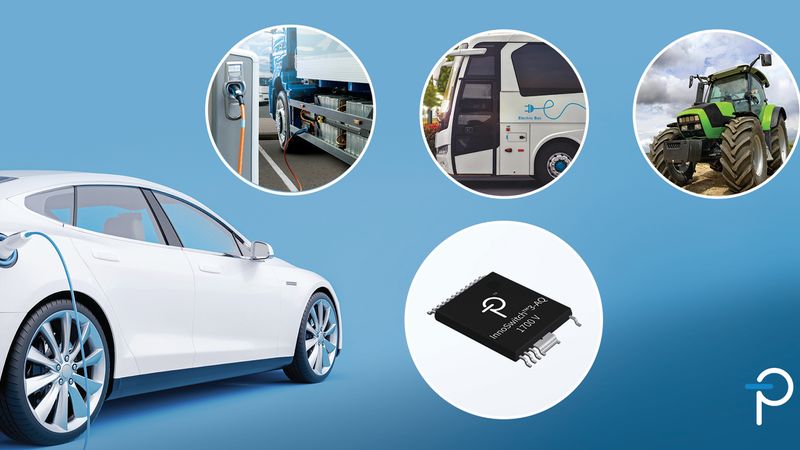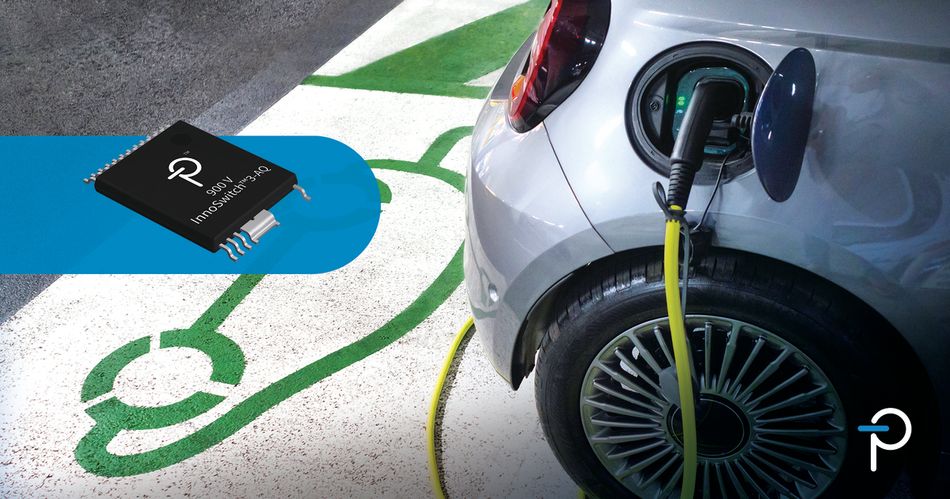GaN set to become ubiquitous in power electronics
In the in-depth interview, PI Vice President of Marketing Doug Bailey explains GaN technology and the new possibilities it brings to the power conversion industry.
Q: What is driving market growth for Wide Bandgap (WBG) devices?
With gallium nitride (GaN), efficiency is the key driver which impacts everything else, resulting in less heat, smaller size and lower cost. The fundamental market drivers within the power field are efficiency and cost. Efficiency has been driven by regulatory requirements, but also by market requirements for power supplies to be smaller and lighter. Looking at cost, Power Integrations is finding is that for higher-end power supplies with a higher spec, GaN is the lowest cost approach because it saves heat sinking and the extra switches necessary for complex topologies.
But optimizing the potential of GaN requires new system-level thinking. The old topologies that were invented to compensate for the challenges of using silicon are not required, because GaN is much closer to being an ideal switch. By that I mean that GaN devices switches very, very fast, they have a very low gate capacitance, and very low output capacitance COSS. But that brings with it a different set of design challenges. Power Integrations has found that the best way to work with GaN is to build a system around it. So we create sub-systems in GaN, such as our InnoSwitch™ flyback power supply ICs, our power factor correction HiperPFS-5™ parts and our LytSwitch-6™ LED drivers. We have brought to market GaN devices that benefit notebook adapters, cell phone adapters, small power supplies, LED lighting, etc, and there is much more to come.
Power Integrations is following the same system-level strategy for silicon carbide, and we're seeing the same system-level benefits. When it comes to picking which WBG technology to use, the differentiation in our minds is voltage level: we're using silicon carbide in 1700 volt products which are targeting 800 volt automotive applications, but for 400 volt automotive applications, we think GaN is the ideal solution.
Q: What are the trade-offs between using a wide bandgap semiconductor device and a traditional silicon-based device?
It's a complicated answer, but I think that the enclosure size target is the determining factor. From the enclosure, the available heat budget - in order to fit a suitable power system into that enclosure - can be calculated. From this, designers can evaluate whether they are able to use silicon with a simple topology, or whether they need to use silicon with a complex topology or GaN with a simple topology. The benefit of GaN lies in its low cost of switching which means that it can be switched without having to use a resonant topology…which is how you achieve similar results with silicon. The moment you go with resonant (LLC), you have to add more switches – hence more cost. And you lose a dynamic range of operation so you've triggered problems with constraints on your input or output voltage.
So the trade-off is whether the constraints of complex silicon outweigh any perceived risks associated with using the new technology. Power Integrations believes that that new technology is proven, reliable and rugged…and also that it delivers the lowest system cost. So we would suggest the GaN solution rather than an LLC, even though we have LLC ICs in our toolbox too. We recommend a simple GaN flyback over a more complex resonant supply simply because of the flexibility that the flyback provides.
Q: What are the key packaging considerations wide bandgap semiconductors, and how can they be addressed?
Power Integrations is a sub-systems company, not a GaN transistor company: we integrate the switch, GaN, SiC or silicon, into a package along with other functions to deliver an integrated power solution. We're not trying to make the best package to address the needs of a power FET, we're creating the best package for a multi chip sub-system for a small flyback power supply, a PFC device or an LED driver. As such, our packaging challenge is unique. But a founding principle of Power Integrations was to minimize the number of pins and the size of the package, bearing in mind constraints about creepage, so WBG has not changed our approach in this respect.
With this in mind, Power Integrations produces custom packages that are most suitable for power at an electrical and thermal and mechanical level. When we design a package, we consider:
“Is it going to be isolated?”
“Will it conduct the heat away properly?”
“Is it strong enough to resist moisture?”
“Will it pass the usual basket of JEDEC and automotive tests?”
Power Integrations is continually innovating in packaging. As an example, a few years ago, we introduced Fluxlink™, a communication technology that enables feedback to be delivered across an isolation barrier without the use of any magnetic materials or an optocoupler. FluxLink delivers a very high communication bandwidth which enables a much faster load-transient response. But because FluxLink is a leadframe-based approach, we use standard stamping tools and standard transfer-molding technology. Therefore, we don't we don't incur any cost penalty, despite using a multichip module approach.
Q: How can thermal management be optimized in a high-power wide bandgap semiconductor device to ensure reliable operation?
A general comment concerning thermal management is that Power Integrations has found that more GaN is cheaper than more aluminum. In other words, it's better to increase the size of the GaN transistor and generate less heat in the first place than to attempt a mechanical thermal heatsink-plus-fan solution afterwards. Milligrams of GaN is cheaper than kilograms of aluminum.
Specifically, one of the most important design considerations is to ensure that the heat sink is at source - i.e. it's grounded. So Power Integrations makes sure that its devices have a large amount of metal from the lead frame of the package exposed and available to be soldered down. Sometimes we have a pad on the back of the part, sometimes we have a tab on one side. Our devices feature a grounded tab, so there is no hot, high voltage heat sink that is switching up and down at high frequency, radiating on a broad spectrum of frequencies causing EMI problems.
Q: How will the use of wide bandgap semiconductor devices develop in the power electronics industry?
Because GaN approaches the ideal switch, my view is that when GaN can, GaN should. I see GaN basically taking over at the lower voltages - mains through to 1200 volts; essentially GaN will become ubiquitous up to a certain power level, especially for applications that need to be efficient across the load range. It's dependent on the technical development of GaN: as the voltage of GaN increases it will replace silicon carbide, and as its current carrying capacity increases, GaN will replace IGBTs.


